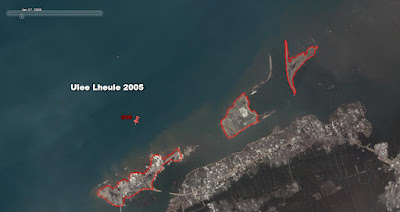 For all you visual learners out there, VisWiki is for you. I heard about VisWiki from VerySpatial and this wiki site is really rich with search capabilities. Here's what VisWiki has to say for itself:
For all you visual learners out there, VisWiki is for you. I heard about VisWiki from VerySpatial and this wiki site is really rich with search capabilities. Here's what VisWiki has to say for itself:
VisWiki is a visual, intuitive, and interactive web interface to encyclopedic knowledge/information, especially of Wikipedia. It is designed to provide a fun place to learn stuff in an efficient manner.

Above you can see the different pre-configured categories (expand the plus sign to find out sub-categories) and the languages you can search in. Below I did a search of "tablet PCs" to see what they came up with.
 Above in green #1 is my search of Tablet PCs. You can click a plus sign and get more information on, for instance, what's the difference between tablets and regular notebooks (laptops). There are 1,424 photos linked to the term 'tablet pc' (green #2). There's a tag cloud that, oddly enough, puts Toughbook as the largest strongly related link. And at green #3 there is this other kind of mental map showing items with a relationship to a tablet PC. You can probably tell that I don't know what #3 is but I do think it's kind of cool. Scroll down for more...
Above in green #1 is my search of Tablet PCs. You can click a plus sign and get more information on, for instance, what's the difference between tablets and regular notebooks (laptops). There are 1,424 photos linked to the term 'tablet pc' (green #2). There's a tag cloud that, oddly enough, puts Toughbook as the largest strongly related link. And at green #3 there is this other kind of mental map showing items with a relationship to a tablet PC. You can probably tell that I don't know what #3 is but I do think it's kind of cool. Scroll down for more...
At green #4 shows that there are 674 videos related to 'tablet PCs' and if you want to search further and link off and out of this VisWiki page, at green#5 you can search Flickr or YouTube or Yahoo, and so on.











 Here's how you digitize in Google Earth. Click on the Add Polygon button (circled in
Here's how you digitize in Google Earth. Click on the Add Polygon button (circled in 
 This is the same location, the island Ulee Lheule, but from the 2005 aerial. This was also digitized with a pen. Notice that there are three obvious sub-islands. You will need to create a separate polygon for each island. Create a folder to place your sub-polygons into and then do your adding of polygons.
This is the same location, the island Ulee Lheule, but from the 2005 aerial. This was also digitized with a pen. Notice that there are three obvious sub-islands. You will need to create a separate polygon for each island. Create a folder to place your sub-polygons into and then do your adding of polygons. Finally, here are both layers from 2004 and 2005 on one image. Clearly there's some erosion that's taken place and/or inundation of ocean water on Ulee Lheule.
Finally, here are both layers from 2004 and 2005 on one image. Clearly there's some erosion that's taken place and/or inundation of ocean water on Ulee Lheule.


 Below I'm showing the three 'archival' aerial photographs for the Vassar College campus. Google isn't going back very far here in Poughkeepsie. We have aerial photos from the 1930s, but this is a great start. Below, in order, is 1995, 2004 and 2006. I've circled the time line bar that allows you to know when the photographs were taken; you can easily slide back and forth through time. You can see that Vassar, since 1995, has gotten a new gym, a new observatory and a new parking lot.
Below I'm showing the three 'archival' aerial photographs for the Vassar College campus. Google isn't going back very far here in Poughkeepsie. We have aerial photos from the 1930s, but this is a great start. Below, in order, is 1995, 2004 and 2006. I've circled the time line bar that allows you to know when the photographs were taken; you can easily slide back and forth through time. You can see that Vassar, since 1995, has gotten a new gym, a new observatory and a new parking lot.


 You could always make a tour in Google Earth. I think tours are a great way to fly up a river or zoom around the world quickly, but now Google has added a Record a Tour icon to the toolbar (circled in green above). I tried it out rather quickly and it is a breeze. It records your movements in Google Earth and your voice. This will be terrific for presentations when you're not sure of the strength of internet access. I'm not sure how Google has done this, but the movie making feature in the Pro version never worked for me. This might be the ticket.
You could always make a tour in Google Earth. I think tours are a great way to fly up a river or zoom around the world quickly, but now Google has added a Record a Tour icon to the toolbar (circled in green above). I tried it out rather quickly and it is a breeze. It records your movements in Google Earth and your voice. This will be terrific for presentations when you're not sure of the strength of internet access. I'm not sure how Google has done this, but the movie making feature in the Pro version never worked for me. This might be the ticket.






